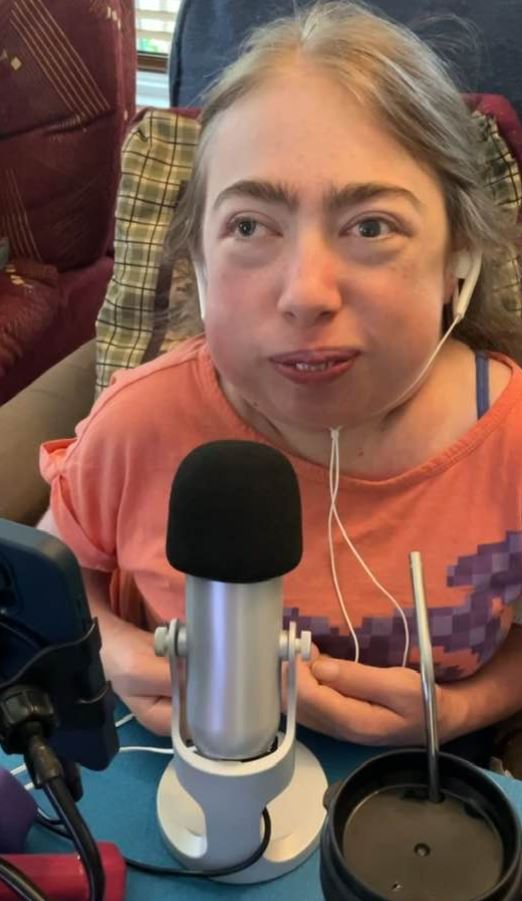In today’s rapidly evolving technological landscape, assistive devices are opening new possibility for individuals living with disabilities.
For Monika, the transition to assistive technology wasn’t just a choice—it was a necessity. Unable to use a traditional computer for the past six years due to her curved fingers, Monika has embraced assistive technology and would like to share how these tools can transform daily life, fostering independence and enhancing quality of life for others facing challenges like visual impairment or mobility issues.
“I’ve loved using my iPhone and my tablets along with my Amazon Echo speakers,” Monika shares, highlighting how these mainstream devices have become powerful accessibility tools.
I have many apps to help me every day. Each of these have their own functions and capabilities. By using my phone camera, I can read birthday cards, business cards, street signs, or labels on packages. Here are a few I use:
Apps That Make a Difference
1. Seeing AI: Reads short pieces of text, ideal for birthday cards, business cards, and package labels. https://www.seeingai.com/
2. Envision: Assists with document scanning and navigation.
3. Be My Eyes: Connects users with sighted volunteers for visual assistance.
4. Piccybot: Convert photos into spoken descriptions
The Magic of Screen Readers , Dictation and Detection Apps
At the heart of Monika’s digital experience is the screen reader—a game-changing technology built into most modern gadgets and the “Voice Over” acccessibility feature on her iPhone to convert.
“What I use is called a screen reader,( called Voice over) ” Monika explains. “These are built into almost all pieces of gadgets nowadays. It will read out exactly what is on your screen, such as buttons, links, text, and other things.”
Instead of tapping icons, Monika navigates her devices with custom gestures; -Swiping left to right with one finger to move between items; Double-tapping with one finger to activate an item
“For writing long things like this, I always use dictation! And that is available on every phone as well. When you bring up your keyboard, right next to the spacebar you have emojis, and then one that says dictation with a picture of a microphone on it. at least that’s what it looked like when I had sight but it could’ve changed ha ha. Tapping on this will start dictation and you just talk away. Remember to add punctuation though… Or else it becomes a jumbled mess LOL. It becomes second nature to pronounce all of the punctuation and sometimes I accidentally say it when I’m talking to friends or family and they look at me weird 😊”
“Another feature on my phone is “Scan Document”. This is for larger pieces of paper. I take a picture using voice guidance. It’ll tell me to move right or left, forward or backwards. And then I take the picture, and it will scan it. I can then move from section to section such as on a restaurant menu and read through appetizers, main courses, drinks etc. Or I can scan newspapers or my bank statements. Of course, it is not always perfect but it’s better than how it was 20 years ago.
It’s also fun because there are other functions such as detect people. I can take a picture of someone I know, and it will save their facial features. So, I can write “mom” and every time I hold my phone up and scan around the room it’ll tell me if my mom is standing at 8 o’clock or something similar. It could also detect different shades of colours or different currency.”
The Future in AI
“They are also working on AI to help describe scenes, photos, and videos. For example, I can take a picture and send it to Be My Eyes AI. It takes a couple seconds to scan it, but then it gives me a big paragraph with detailed descriptions. I took a picture at the carnival and described me sitting in my wheelchair, smiling and a dusk setting.”
Let’s get the conversation going!
Not letting my disability get the better of me, even if I become more homebound, my mind is wide open and adventurous! I hope that I can spread as much knowledge as possible. I might not be the best at learning quickly, but I love trying to help and spreading what I do know. If someone is struggling or has any questions, I am more than happy to help! Because we can’t know about the tools that might make our life better if no one talks about them.” – Monika
The challenges and needs of our small MPS community are pretty unique so if you have any tips or have found useful resources, please email us and they can be shared through the e-newsletter. Let’s get the conversation going!

